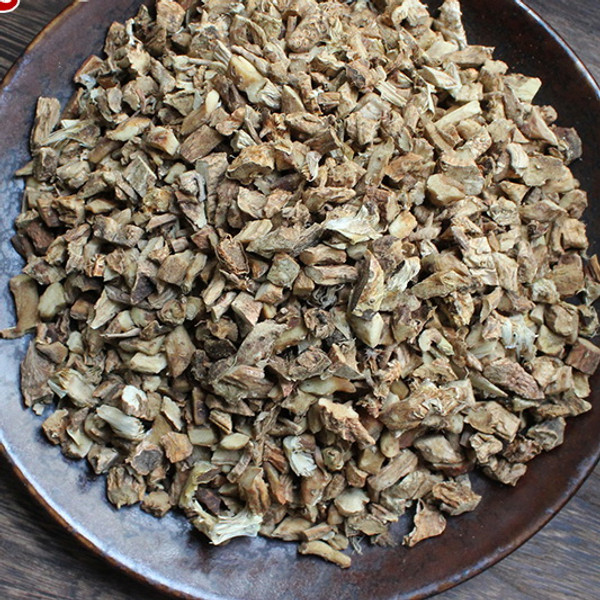Product Overview
Parts used: Dried rhizome
TCM category: Herbs that clear Heat and purge Fire and/or clear Summer Heat
TCM nature: Cold
TCM taste(s): Bitter Sweet
Meridian affinity: Stomach Kidney Lung
Scientific name: Anemarrhena asphodeloides
Use of anemarrhena rhizomes (Zhi Mu) in TCM
Please note that you should never self-prescribe TCM ingredients. A TCM ingredient is almost never eaten on its own but as part of a formula containing several ingredients that act together. Please consult a professional TCM practitionner, they will be best able to guide you.
Preparation: Slice the root and dry it in a moisture-free room.
Dosage: 6 - 12 grams
Main actions according to TCM*: Clears Heat and Fire from the Qi level. Clears Heat and Fire from the Lung and Stomach. Clears Heat and tonifies the Yin.
Primary conditions or symptoms for which anemarrhena rhizomes may be prescribed by TCM doctors*: Fever Dry mouth Dry cough Constipation Night sweats Hypersexuality Bleeding gums
Contraindications*: This herb should not be used by those with Spleen Deficiency with loose stools and/ or diarrhea. It should also be avoided for Yin Deficiency Heat (because it clears Excess) and should only be used for Wind-Heat conditions.
Common TCM formulas in which anemarrhena rhizomes are used*:
For fevers with thirst and irritability combine anemarrhena rhizomes with lophatherum herbs (Dan Zhu Ye) and gypsum (Shi Gao).
For cough with thick yellow phlegm combine anemarrhena rhizomes with baikal skullcap roots (Huang Qin) and snake gourds (Gua Lou).
For bronchial ulcerations combine anemarrhena rhizomes with croton fruits (Ba Dou) and platycodon roots (Jie Geng).
For diabetes combine anemarrhena rhizomes with american ginseng (Xi Yang Shen), yam (Shan Yao), unprepared rehmannia (Di Huang) and gypsum (Shi Gao).
Key TCM concepts behind anemarrhena rhizomes (Zhi Mu)'s properties
In Traditional Chinese Medicine (TCM), anemarrhena rhizomes are plants that belong to the 'Herbs that clear Heat and purge Fire and/or clear Summer Heat' category. Herbs in this category are used to clear inflammatory and infectious conditions, referred to as 'Internal Heat' in TCM. This is why most of the herbs in this category will have both antibacterial and antiviral properties. In TCM one has too much 'Heat' in their body as a result of a deficiency of 'Yin' (which is Cold in nature, see our explanation on Yin and Yang) or, more commonly, an excess of Yang (Hot in nature). Herbs that clear Heat and purge Fire treat the latter and as such tend to be Cold or Neutral in nature.
As suggested by its category anemarrhena rhizomes are plants that are Cold in nature. This means that anemarrhena rhizomes typically help people who have too much "heat" in their body. Balance between Yin and Yang is a key health concept in TCM. Those who have too much heat in their body are said to either have a Yang excess (because Yang is Hot in nature) or a Yin deficiency (Yin is Cold in Nature). Depending on your condition anemarrhena rhizomes can help restore a harmonious balance between Yin and Yang.
Anemarrhena rhizomes also taste Bitter and Sweet. The so-called "five elements" theory in Chinese Medicine states that the taste of TCM ingredients is a key determinant of their action in the body. Bitter ingredients like anemarrhena rhizomes tend to have a cleansing action on the body by clearing heat, drying dampness and promoting elimination via urination or bowel movements. On the other hand Sweet ingredients tend to slow down acute reactions and detoxify the body. They also have a tonic effect because they replenish Qi and Blood.
The tastes of ingredients in TCM also determine what organs and meridians they target. As such anemarrhena rhizomes are thought to target the Stomach, the Kidney and the Lung. In TCM the Stomach is responsible for receiving and ripening ingested food and fluids. It is also tasked with descending the digested elements downwards to the Small Intestine. The Kidneys do not only regulate the urinary system but also play a key role in the reproductive system and the growth and aging process of the body. In addition to performing respiration, the Lungs are thought to be a key part of the production chain for Qi and the body fluids that nourish the body.






